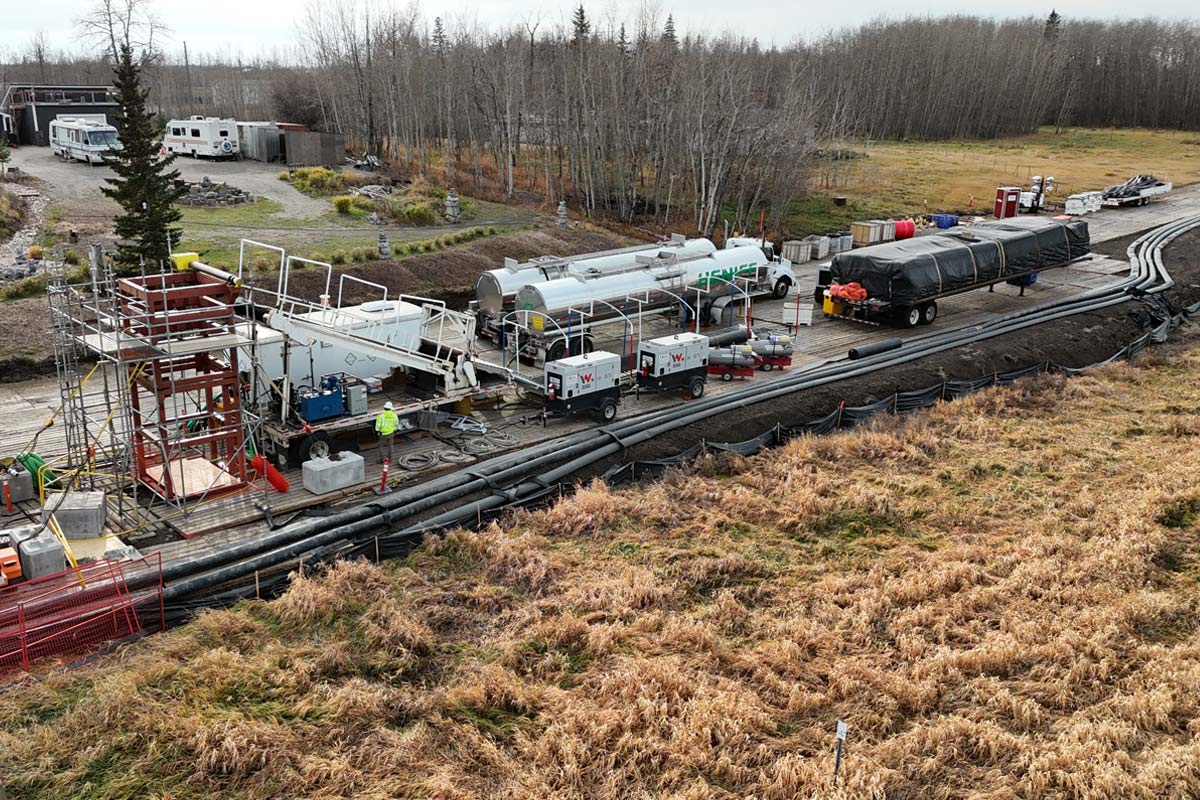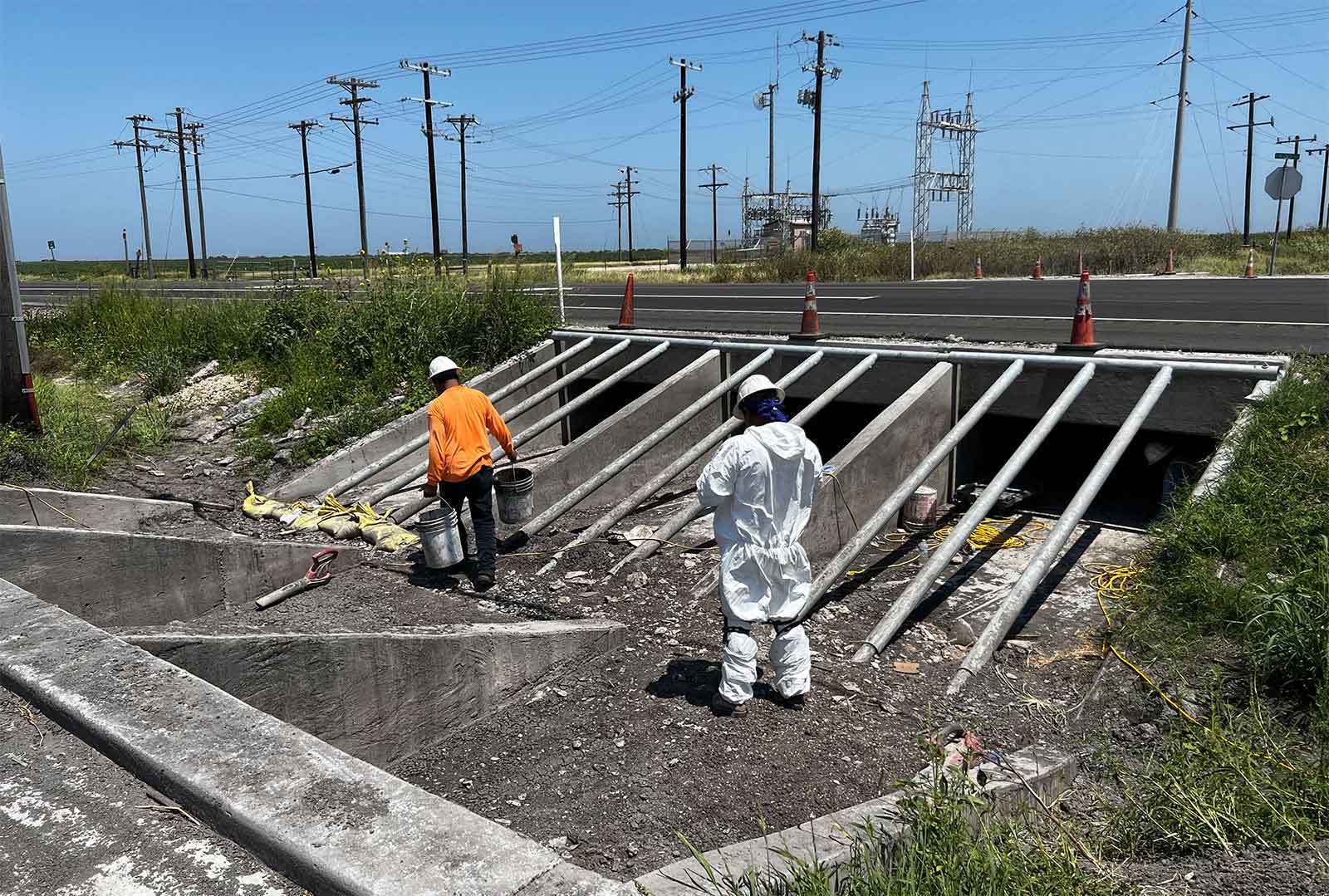
Clearing Up a Clarifier’s Leak in Calgary
Custom CIPP Solution Needed During Fish Creek Project

Calgary is the largest city in the Prairies, with the Fish Creek Wastewater Treatment Plant serving a metropolitan area of more than 1.3 million Calgarians every day. Built in 1960, the plant treated 18,600 cubic metres of water a day and has since grown to treat more than 72,000 cubic metres a day.
Graham Construction was tasked with the rehabilitation of the clarifier and related mechanical components, and when they discovered this situation, it spurred a CCTV inspection. They found that the clarifier’s 450 mm carbon steel drain pipe had water gushing from a 30 mm hole on an elbow, with about 6.5 m of head pressure.
After striking out to find an acceptable solution Graham Construction contacted Advanced Trenchless Inc. (ATI), of Edmonton. The 10-year-old underground infrastructure inspection and rehabilitation contractor has built a reputation as a creative and forward-thinking company because it approaches all projects by thinking beyond traditional means to engineer effective solutions that work for its clients.
This project required that approach as the leak was detected on an elbow in the drain pipe from the centre of the clarifier to the pumphouse. This led to multiple challenges that required ATI to think beyond conventional repair methods and exhaust all possibilities to overcome these obstacles.
Due to large volumes of water infiltration, both the water table and depth, and external pressure, were extremely high. To avoid destruction and removal of the concrete clarifier, traditional excavation was not an option.
Looking back on similar projects ATI successfully completed, the team collected its experience and knowledge of techniques, products and materials. The team established a site-specific project strategy and designed a custom repair method to resolve the issue at hand. The solution involved a cured-in-place pipe (CIPP) spot repair at the elbow followed by the complete relining of the 450 mm drain pipe from the clarifier to the pumphouse.
While traditional sewer repair often involves digging and excavation that can lead to structural damage, CIPP accomplishes the same results with little to no disruption. This method is also environmentally friendly as it re-uses existing pipe rather than creating excess waste.
Using a combination of methods and materials, the team was able to conduct a spot repair on the affected elbow in the drain pipe by means of a custom designed liner built specifically to conform to the shape of the elbow. This allowed them to overcome the water overflow that would lead to certain resin washout and seal off the water from the liner and host pipe. Hydrophilic gaskets provided additional stoppage support at end seals between the CIPP liner and carbon steel host pipe.
When the water infiltration was stopped using the CIPP spot repair method, the team began to rehabilitate and reline the entire pipe by installing and curing the full length CIPP liner. But this also came with a challenge of its own – location.
The entry point to the pipe was located 15 m from the wall, in the centre of the large clarifier. To gain access, operators installed 12 m of scaffolding in the centre of the clarifier, which allowed them to install a full-length liner, measuring 9 m deep. Within three days, the unanticipated leak and pipe rehabilitation were successfully completed.

Most recently, ATI has obtained a license to install the Triplex Lining System (TLS). The TLS, by McNeil Technologies, is an engineered manhole liner with an impermeable layer sandwiched between fibreglass, creating a virtually indestructible liner that is dropped into a manhole and cured in place. This system has been used in the United States with great success and is now available in Western Canada through ATI.
It is this innovative leadership that got the attention of Aquatera Utilities Inc. in Grande Prairie, Alberta. Aquatera provides water, wastewater, solid waste, recycling and energy services to governments, businesses and communities. As an industry trail-blazer, Aquatera is always looking for opportunities to expand services outside of its core business units.
In December 2017, Aquatera acquired ATI. This acquisition is a natural fit as it aligns with Aquatera’s underground services business unit, responsible for managing and maintaining the underground services within the region.




